Museum of the Mountain Man
Page Summary: The Museum of the Mountain man, in Pinedale, WY, explores the history of the Rocky Mountain fur trade era.
 Museum of the Mountain Man General Information
Museum of the Mountain Man General Information
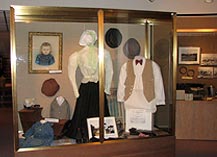
700 E. Hennick, Pinedale
307-367-4101 or Toll-free 877-686-6266
www.MMMuseum.com
The Museum is open May 1 - October 31.
Hours: 9 a.m. - 5 p.m. Daily through September.
9 a.m. - 4 p.m. Monday - Friday in October.
Open by appointment in the winter, please call.
Admission fees: $5 Adults, $5 Senior Citizens, $3 Children 6-12 years old
Visit the Museum of the Mountain Man website at www.MMMuseum.com
 Museum of the Mountain Man - Pinedale, Wyoming
Museum of the Mountain Man - Pinedale, Wyoming
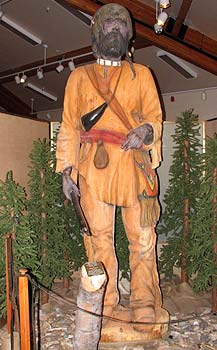
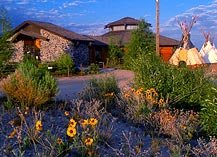
During the years 1824-1840, the area now known as Sublette County lay at the heart of the Rocky Mountain Fur Trade, which supplied precious beaver pelts to the fashion industries of Europe and the eastern United States. Mountain men like Jim Bridger, Kit Carson, Thomas Fitzpatrick and William Sublette carved their legends here, and opened the way for the pioneers of the Oregon Trail.
Today, the Museum of the Mountain Man is one of Pinedale's cultural focal points, attracting about 12,000 visitors a year during its six-month season. The Museum was established by the Sublette County Historical Society to preserve and illuminate the history of the Rocky Mountain Fur Trade era, and Sublette County's role as the fur trade's center of operations. The museum also provides an excellent window on the economy of the fur trade and settlement of the West as it occurred in this region. New exhibits are mounted annually and include items from the permanent collection as well as traveling displays. The Museum hosts several fundraisers each year, as well as many of the history-oriented educational events and entertainment surrounding Green River Rendezvous Days, held the second weekend in July. In fact, the Sublette County Historical Society initiated the first Rendezvous Pageant in 1936 and carried on the re-enactment tradition until 2002. Now the Green River Rendezvous Pageant Organization handles the reenactment, allowing the Museum to focus on other aspects of Rendezvous Days.
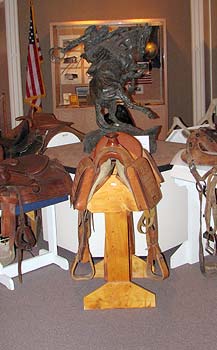
The 15,000 square foot structure, overlooking the town of Pinedale from Fremont Lake Road, was designed to evoke the circular structure of the Native American tipi, with its smoke hole at the top. The property is attractively landscaped with native species of trees and shrubs, many of which provided food and other resources to the mountain men. The interior features a bright, spacious rotunda with displays around the walls and across the center. Lectures and receptions take place off the rotunda or in the lower level. The Museum's collections include many relics of the fur trade era, including a rifle once owned by Jim Bridger. The finest Native American sheephorn bow still in existence, discovered in the nearby Gros Ventre, also rests here. Arguably its best but largely unseen jewel is a priceless research library with many rare and classic books on early Wyoming history and the fur trade era, acquired mainly through private donations.
The Museum grew from the richness of local history, the keen interest of community members, and an abundance of available artifacts. Since the inception of the Sublette County Historical Society in 1934, the group's dream had been to create a nationally known repository for Rocky Mountain Fur Trade history.
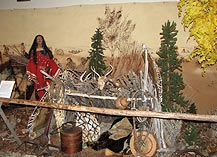
Artifacts were being donated to the volunteer group early on, and a proper place to protect and display these items grew into a necessity. In 1965, plans were begun for building the museum, and a massive fundraising effort stretched from local supporters to foundations across the country, bringing in donations from the Lila Wallace Readers Digest Fund, Lawrence Rockefeller, and the Union Pacific Railroad. At first, the Union Pacific wasn't sure it wanted to grant money to a museum that would be built 100 miles from the nearest railroad, near the city of Green River. However, the Historical Society pointed out that the first railroad across the West had been built in the 1860s with railroad ties cut from the alpine forests of Sublette County. The trees had been cut in what is now the Bridger-Teton National Forest, shaped into ties, and floated down the Green River 130 miles to Green River City. "If it hadn't been for our trees," noted the Society, "you wouldn't have had a railroad." Union Pacific granted the Museum $30,000.
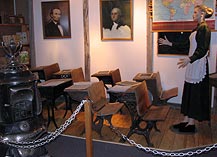
In April 1974, ground was broken at the current site on land donated by the Town of Pinedale. The building was constructed in stages, with the Historical Society raising the necessary money for each stage, and paying for each stage as it was completed. In this manner the Museum of the Mountain Man was built without burdening the Sublette County Historical Society or the community with debt. The completed building was dedicated during the 1990 Rendezvous Days. At that time, the Museum and its property was valued at about $2 million.
The Museum of the Mountain Man was built entirely from private donations and the dedication of volunteer board members. Today, in addition to continuing private support, the facility also receives funding from the county and is beginning to establish an endowment. Says former board member Paul Hagenstein, "It's been a wonderful experience to see where we've been and how we got here. We had a dream and we persevered." It took many meetings and a lot of hard work, Paul recalls, but "we bowed our necks - we were going to make it happen."
